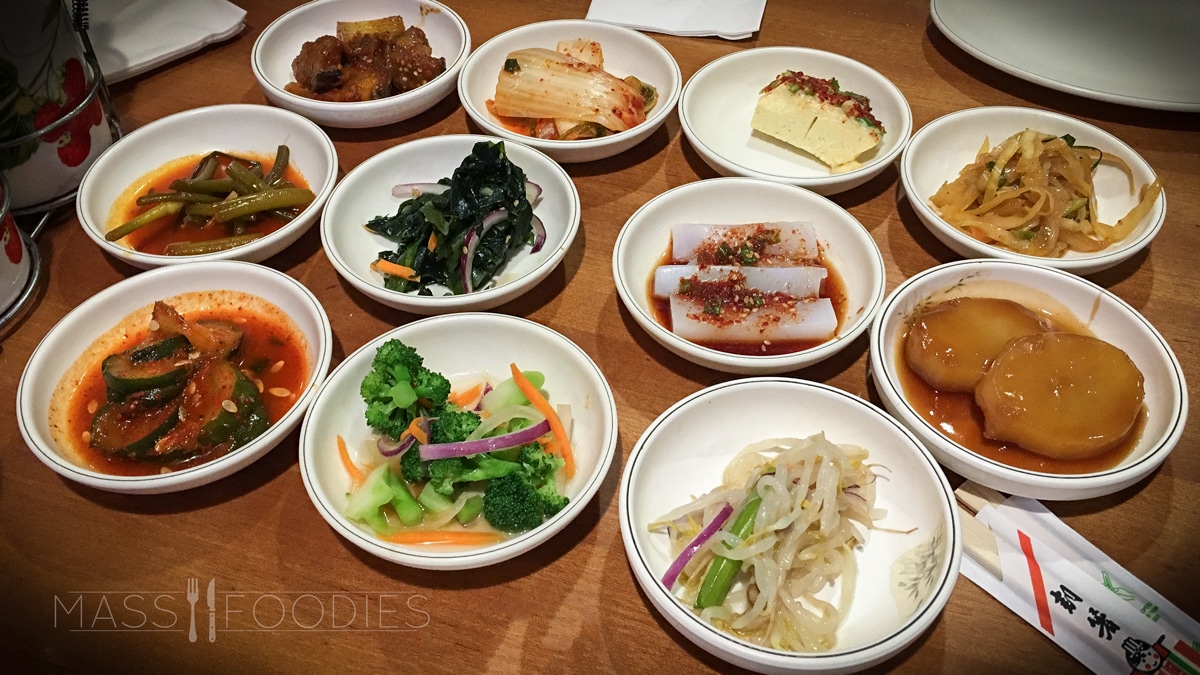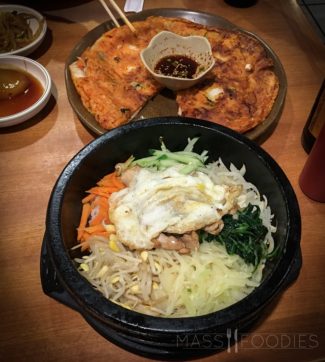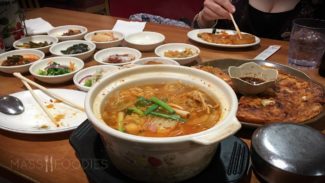
There are great moments in the history of food that often go unheralded: the first person to slice bread, the first person to figure out how to eat an artichoke, and of course the genius behind the Hot Pocket. Some of these names and faces have been sadly lost to history.
 We have seen a number of Korean restaurants coming online here in Central Massachusetts. And on the 80th birthday of SPAM, the most American of processed meats (sorry Taylor Ham), and amid the sabre rattling on the Korean Peninsula, it is only right dear reader, that we consider the rich and bizarre history of the Korean dish budae-jjigae (pronounced budd-ah jig-ee). The name for this dish translates directly: army base soup. This is, quite frankly the melding of two food cultures by dint of war, famine, and one woman willing to make the best of a bad situation.
We have seen a number of Korean restaurants coming online here in Central Massachusetts. And on the 80th birthday of SPAM, the most American of processed meats (sorry Taylor Ham), and amid the sabre rattling on the Korean Peninsula, it is only right dear reader, that we consider the rich and bizarre history of the Korean dish budae-jjigae (pronounced budd-ah jig-ee). The name for this dish translates directly: army base soup. This is, quite frankly the melding of two food cultures by dint of war, famine, and one woman willing to make the best of a bad situation.
In my search for this signature Korean dish, I found the highly regarded Westborough Korean Restaurant right off the rotary in Westborough center. I was impressed by the array of dishes on the menu (how many local restaurants are doing blood sausage?) and quickly ordered the kimchee scallion pancakes, the bipimbap, and of course their ‘budae chiggae.’ A side note on kimchi: it’s one of the cornerstones of Korean cuisine. Books have been written on it. When South Korea sent its first astronaut into space, kimchi went with him.
While South Korea has had a vibrant and prosperous fifty years or so, its history from 1900 to the mid-1970s was marked by occupation – the Korean War and a strict military dictatorship. Following the war, South Korea was in the grips of a famine. The U.S. military continued to occupy large bases outside Seoul and it was just outside one of these bases that budae-jjigae was born. Koreans who worked in the cafeterias at the US Army base would smuggle out leftover food. This was during a time when a Korean who was caught smuggling SPAM was could be put to death.
 Budae-jjigae is as varied as the cans of American military rations that could be smuggled out of the “post exchange” (PX) on any given day: hotdogs, SPAM, American cheese, ground turkey, baked beans, Vienna sausages, or macaroni. These American military rations, whatever could be bought or bargained for, were combined with Korean ingredients: instant ramen noodles, kimchee, beansprouts red pepper paste, and a wide array of Korean spices.
Budae-jjigae is as varied as the cans of American military rations that could be smuggled out of the “post exchange” (PX) on any given day: hotdogs, SPAM, American cheese, ground turkey, baked beans, Vienna sausages, or macaroni. These American military rations, whatever could be bought or bargained for, were combined with Korean ingredients: instant ramen noodles, kimchee, beansprouts red pepper paste, and a wide array of Korean spices.
The woman who started it all was Heo Gi Sook. She opened the first budae-jjigae restaurant in the city of Euijeongbu, right next to a U.S. military base. Since this food was contraband, Heo Gi Sook named her first restaurant “fish cake restaurant” to keep from arousing the suspicions of local authorities. As the dish proliferated and became more and more popular, she felt initial pushback from locals; some saw it as inedible, others as another U.S. aggression against Korean culture. Delicious and illicit, the dish took off.
When my order arrived, the kimchi pancakes along with the banchan (a selection of pickled dishes served with every meal), followed by the bipimbap, and ‘budae chiggae,’ the waitress said simply, “Red means hot.” I’ve learned this is a good rule of thumb when eating Korean food. I felt my eyes water from the steam coming off the bubbling crock of soup in front of my face. The broth is rocket hot and bright red. Hiding beneath a bed of scallions and egg were chunks of sliced ham and thick cut bacon and onions.
As I sat there sweating and slurping, I realized that this was not unlike the English dish bubble and squeak, the Carolina Lowcountry Frogmore stew, or my mother’s lime Jello ambrosia salad (which I can only describe as inedible, like the carcass of a Muppet and my god…is that Kool Whip?); necessity is the mother of culinary invention.
So was it a culinary travesty or a symbol of U.S. occupation? I’m not smart enough to answer that question. And to be clear, my immediate thought as the fiery red broth stared back at me, was simply: this is probably the greatest hangover cure imaginable.
As I picked through what I wasn’t able to finish in one setting, the slices of sausage and ham and scallions, it felt like an archeological dig – almost 70 years old now, this dish was living history. It has remained essentially unchanged since Heo Gi Sook first took smuggled military rations, combined them with Korean ingredients, and created a sensation. I was subsequently satisfied and utterly defeated by this amazing soup.
